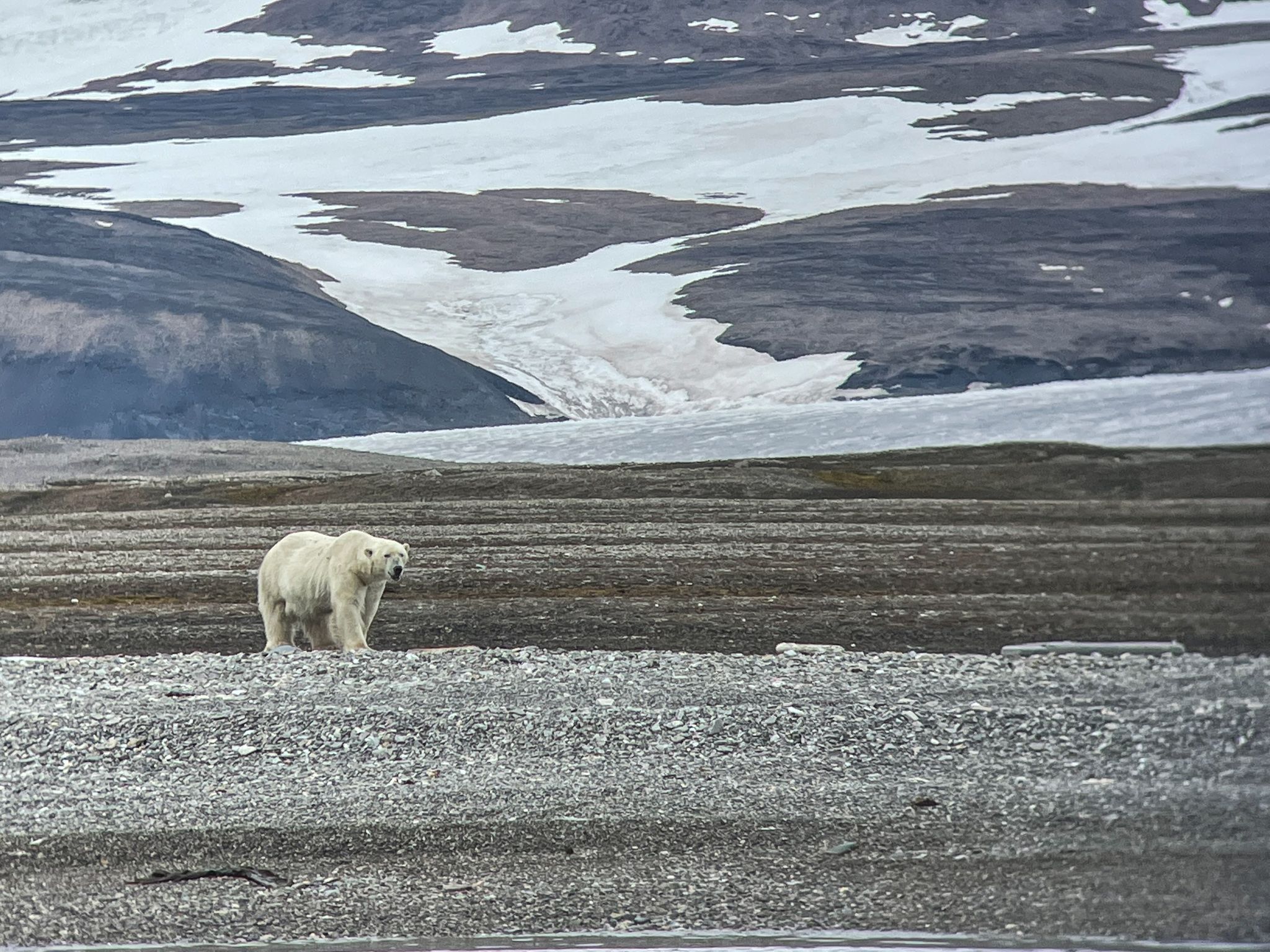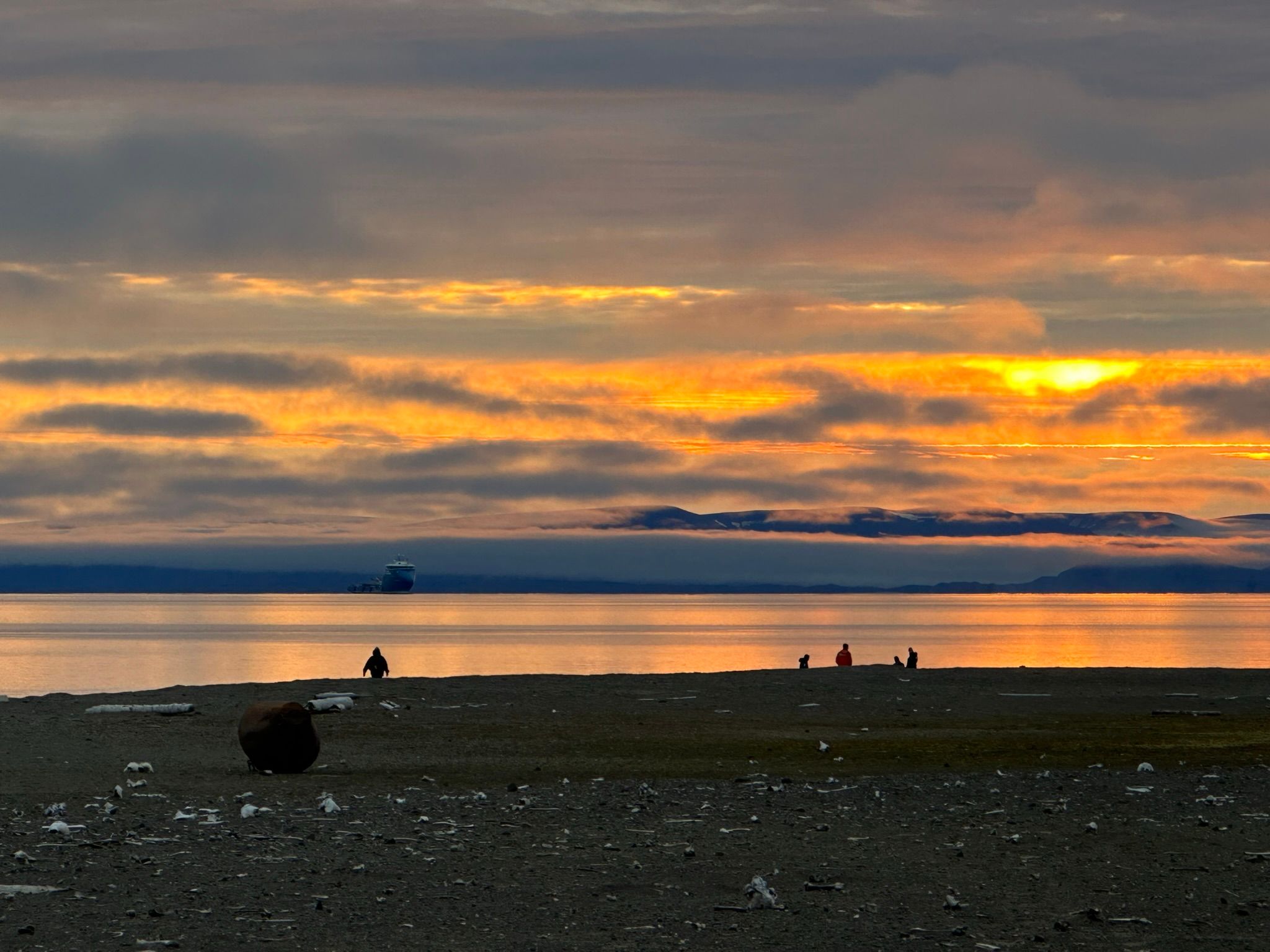
Wild nature.
Inaccessible areas.
But also marine litter.
In 2023, clean-up activitiy on Svalbard was intensified.
For several decades, organisations and passionate volunteers have cleared litter from the coast of Svalbard. Despite the prolonged clean-up efforts, 2023 is a special year, with higher levels of activity than ever before. According to the Governor of Svalbard, 2023 is the year in which “everyone” has wanted to travel to Svalbard to clear the beaches. Vast distances, challenging logistics and short clean-up windows are some of the factors that make beach clean-ups so difficult on Svalbard.
Arctic challenges
Svalbard is an archipelago surrounded by the Arctic Ocean, the Barents Sea, the Greenland Sea and the Norwegian Sea. Litter from near and far finds its way to Svalbard, but it is particularly waste from shipping and fishing activities in the Barents Sea and the sea surrounding the archipelago that drifts ashore. Most of the waste therefore originates from activities on and in the sea around Svalbard.
The Arctic climate, with ice and weather conditions that can change fast, necessitates thorough planning and some flexibility on the part of those who will be carrying out the clean-up activities. It can be a good idea to have a Plan A, B, C and perhaps even D in case things change during a clean-up operation. As well as ice and uncertain weather conditions, beach cleaners must always be prepared for the Arctic fauna and especially the polar bear, the world's largest terrestrial predatory mammal.

Polar bears pose a risk to beach cleaners and any clean-up teams need to have dedicated polar bear guards present during clean-up activities.
Another issue beach cleaners need to deal with is the many protected areas on Svalbard. As much as 65% of Svalbard consists of protected areas and several of these are subject to travel restrictions for all or parts of the year. Beach cleaners must therefore carefully familiarise themselves with the applicable travel restrictions before clean-up activities can commence. On Svalbard, it is also the case that any objects dating back to before 1946 are automatically protected and a protection zone of 100 metres in every direction is required for such objects.
“Everyone” is travelling to Svalbard to clean up in 2023
Rydde Norge Svalbard
The Norwegian Retailers' Environment Fund’s Rydd Norge Svalbard cleared litter in parts of the archipelago during the period between July and September. On behalf of the Norwegian Retailers' Environment Fund, Salt has drawn up a “Plan for clearing marine litter on Svalbard”. The plan has been drawn up in close dialogue with the Governor of Svalbard and provides an overview of priority areas, as well as a description of previous clean-up efforts and key considerations that must be taken into account by those who will participate. A total of five areas in the north of Spitsbergen was prioritised for clean-up activities in 2023. However, the project entails more than just clean-up activities. Due to a lack of knowledge regarding the amounts and sources of litter on Svalbard, the plan is to also carry out survey work and deep-dive analyses on the litter. The project also constitutes a golden opportunity to inspect and register littered areas in Rent hav for clean-up at a later date.
Two Arctic grant projects
In 2023, Marfo awarded grants to two local stakeholders: Svalbard Folk High School and Svalbard turn idretsslag. The projects, “Beach Clean-up Svalbard Folk High School” and “Project Isfjorden” aim to clear litter in areas of Isfjorden and on the coast to the south of Isfjorden. The projects bring together a number of clean-up volunteers, both residents of Longyearbyen and students at the Folk High School. In addition to the clean-up activities, the Folk High School has also worked to improve the knowledge platform relating to the litter they fiMarfo accompanied the school on their operation in 2023. Marfo gathered knowledge and experiences relating to the challenges that arise in connection with clean-up operations in the Arctic when it comes to logistics, coordination, the environment and HSE. The data will form the basis for a dedicated clean-up guide for Svalbard. Marfo’s clean-up tool “Rent hav” was used during the clean-up operation in order to map areas and record the amount of litter cleared.
As well as taking a closer look at the prevalence of marine litter on Svalbard, Marfo also participated in a deep-dive. The deep-dive took place after the clean-up operation where some of the litter cleared by the Folk High School and Rydd Norge was analysed. The analysis was conducted as a collaboration between SALT, Svalbard folkehøgskole, Keep Norway Beautiful and Marfo and financed by the Norwegian Retailers’ Environment Fund. The goal was to gain insight into the types of litter found on the coast of Svalbard and what the main sources could be. The collaboration also constitutes an important step on the way to harmonising the various protocols currently used to record marine litter in Norway.

The Governor's voyage around Svalbard
Each year, the Governor of Svalbard undertakes a voyage around the archipelago in late summer, part of which involves clean-up activities on selected beaches. The Governor of Svalbard also invites the local residents of Longyearbyen to participate in a week-long beach clean-up voyage and there is great demand to participate. On average, the Governor of Svalbard clears 13 tonnes of waste as part of these voyages each year.
Increased activity levels require effective coordination
The Governor of Svalbard plays an important role when it comes to coordinating the clean-up efforts. With increased activity levels, there is also a need for well-coordinated and planned operations to ensure that clean-up activities are carried out in the most efficient and safe manner possible, without any unnecessary impact on the vulnerable Arctic nature and wildlife.

Marfo started its work in the Arctic during the winter of 2023 and held constructive meetings with stakeholders and a workshop with the Governor of Svalbard. The goal of the workshop was to ensure good collaboration between relevant stakeholders working on marine litter. Representatives from public administration, research and academia, tourism and beach cleaners were all present.
One measure is to draw up a clean-up guide for the Arctic. Marfo will assist the Governor of Svalbard with this work. Marfo’s mapping tool, Rent hav, will also be used during the clean-up operations on Svalbard in 2023. This will ensure that there is an overview of the areas that have been cleared and how much litter has been removed from the vulnerable environment on Svalbard during the clean-up season.
In September 2023, Marfo took part in the Svalbard folk high school's clean up in the northwest of Svalbard.
All photos, except the group photo, were taken by Mathias Strömqvist.


